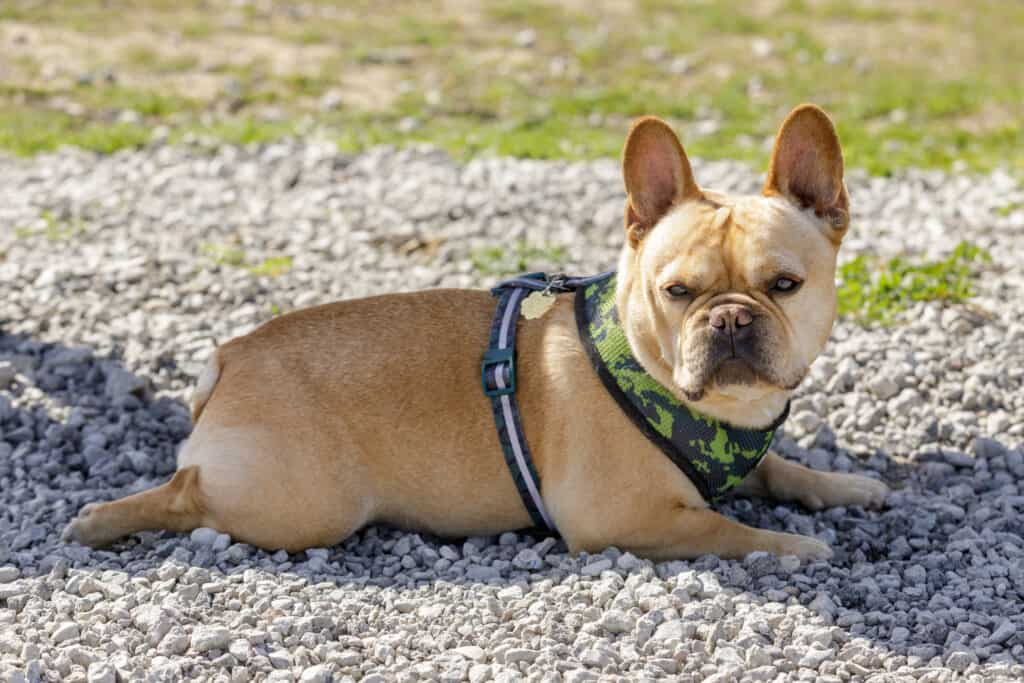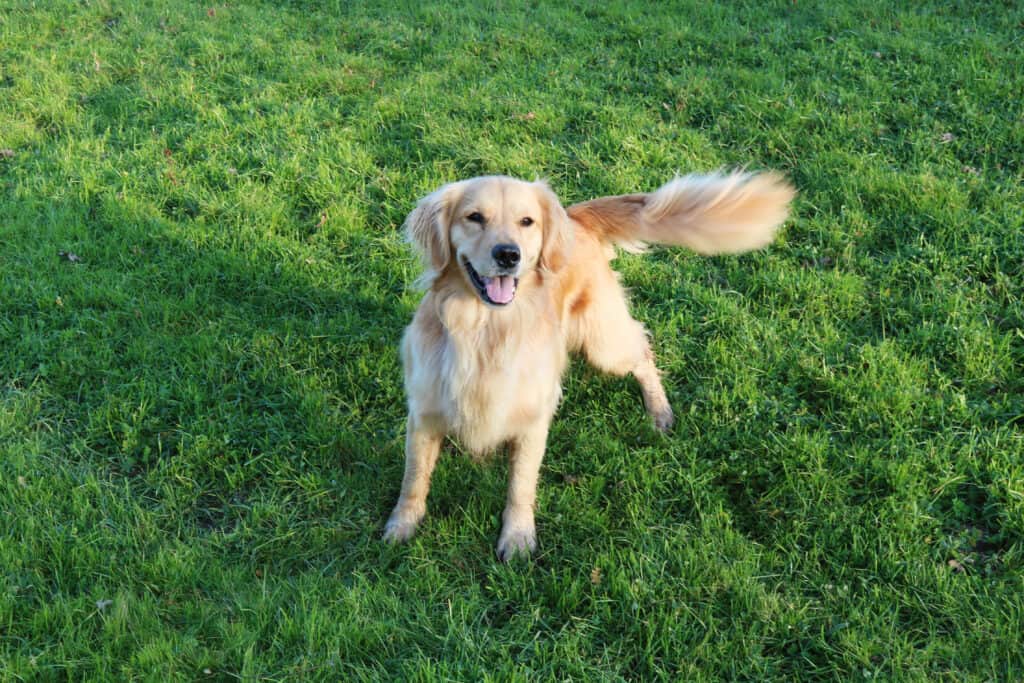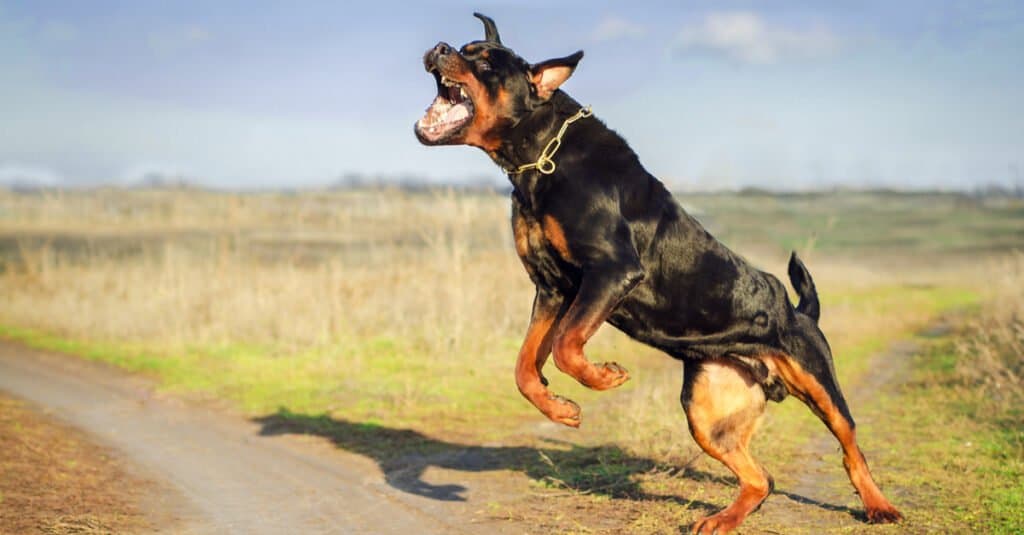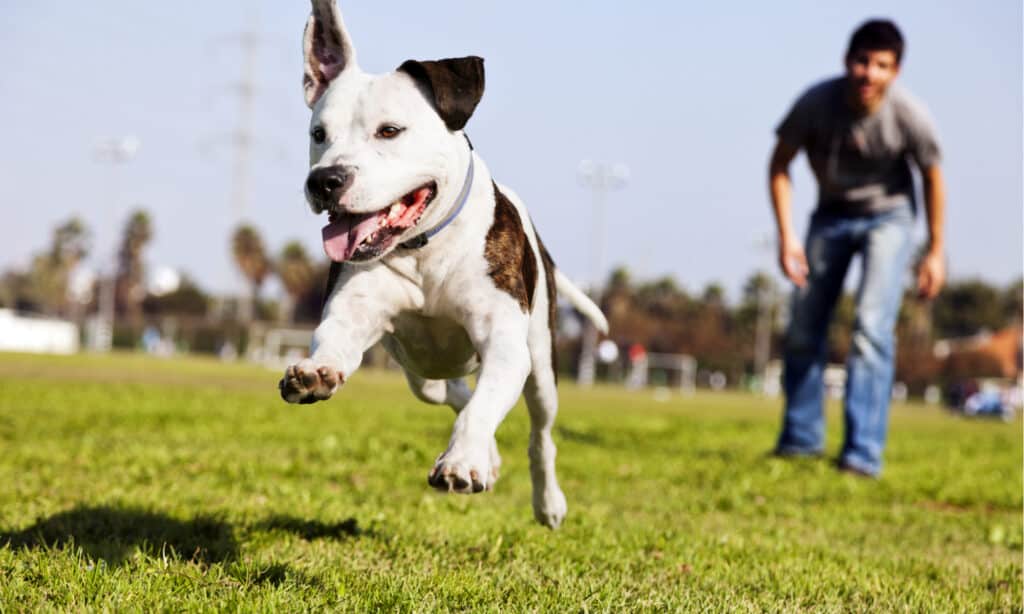A Sign of Insecurity and Anxiety

Dogs suffering from stress, anxiety, and insecurities may lean on their owners. For example, if your dog leans against you when strangers are around, it could mean it feels more secure with you. In addition, leaning against you while petting or walking may indicate that it feels happier close to you.
If your dog does this consistently, it could be because it has some anxiety problems. Several factors can contribute to this behavioral problem in dogs, including:
If this is the case, you must take steps to reduce your dog’s anxiety and stress levels as quickly as possible. This could involve keeping it active during the day. Giving it plenty of exercises also helps to keep it mentally stimulated. This helps reduce anxiety in your pet and helps to keep it healthy and relaxed. You can also ensure it has enough social time with other dogs and people, as this helps to reduce its anxiety about meeting others.
Dogs may lean on you if they are seeking something from you. For example, this could signify that they want to play or eat. If this is the case, paying attention to the position of their tail and ears when leaning toward you is essential.
They want to play if their tail wags and their ears are perked up. On the other hand, if these two signs are not present when your dog is leaning on you, it likely wants something else (like food).

When a dog leans on you, it can be a sign of dominance. Dogs have a pack mentality and want to be the pack’s leader. They know that by leaning on you, they are showing that they are the dominant one in your relationship.
In the dog world, dominance is a complicated concept. A dominant dog doesn’t always act like an alpha; it’s not always apparent that a dog is being dominant. Some dogs are intentionally dominant, but others may just be doing what comes naturally to them.
Dealing with a dominant dog can be challenging because you’re trying to change something natural for your pet. There are ways you can overcome this problem without having to hire a dog whisperer.
A dominant dog will challenge you if it sees you as weak or nervous. If you show fear or nervousness, this will encourage it to continue acting out. So, stay calm and confident in its presence.
Dominant dogs are self-assured, so it’s essential to establish yourself as the alpha. You want to be assertive, not aggressive, when you set boundaries. Dominant dogs will test your limits and see how far they can push you before you give up control.
Dominant dogs need lots of exercises, so they don’t feel bored or frustrated with their environment. So ensure they get at least 30 minutes of exercise each day and make it fun by playing fetch, going for walks, or running around in an open field.
Be assertive and confident when you’re on a walk with your dog. For example, don’t let your dog go up to sniff it when another dog is approaching. Instead, keep your dog by your side and allow the other dog to come first.
When your dog behaves well on walks, reward it with praise or treats. This will help reinforce good behavior so that it continues to listen to you when out in public places.
Some Dogs Lean For Dominance — Maybe

Some argue that the reason your dog leans on you or sits on your feet is to invade your territory. They’re showing you who’s boss by being up in your space and establishing dominance.
More and more dog professionals, however, are dispelling this myth.
Unless your dog is very dominant in every aspect of their personality, chances are good that they’re not leaning on you to prove their alpha status.
How To Read Your Dog’s Body Language Like a Pro
The best way to understand your dog is to learn its body language. By understanding dog body language, you’ll better communicate with your pet and know when it requires attention or if something is bothering it. It also helps prevent misunderstandings and avoid potential conflicts.

If your dog is happy, it will likely show it in various ways. Here are some signs that your dog is happy.
A wagging tail is the most common sign that a dog is happy. Of course, some dogs wag their tails more than others, but even if your dog’s tail doesn’t move much, it may still be happy.
If your dog licks you when you greet it, it wants to cuddle with you. But don’t take anything for granted — just because your dog licks you doesn’t mean it is happy. Instead, it might be trying to show dominance or get something from you (like food).
Rolling over shows submission and trust, both signs of happiness in dogs.
Dogs can jump around when you come home from work or school each day. Of course, they also jump around when they’re excited about something else — like going for a walk or playing fetch — but this is one way dogs express excitement.

Loud noise, among other things, can frighten a dog. It can feel afraid around strangers, unfamiliar places, or other animals.
Because dogs are social animals and want to be part of the pack, they may feel anxious when left alone for long periods. This is particularly true for puppies.
You can tell if your dog is frightened by these signs:
The tail is an essential communication tool for dogs; if it is tucked between their legs, it means they are scared or anxious.
This type of vocalization usually means that your dog is uncomfortable or unhappy.
Wide eyes and dilated pupils indicate fear in dogs and other strong emotions such as excitement and anger.

Aggression is a severe problem for dogs and their owners. Therefore, it’s essential to recognize the warning signs of aggression to take steps to deal with it before it becomes a severe issue.
If you’re concerned that your dog may be aggressive, it’s essential to seek professional help. Don’t try to handle the matter alone or wait until the situation escalates into something dangerous. An experienced dog trainer or behaviorist can help you identify the cause of your dog’s aggression and develop a plan for dealing with it.
The following are some signs that your dog could be aggressive:
It could signify aggression and fear if your dog constantly barks at other dogs or people.
If it is lunging and growling at people or other dogs, it could be sending messages to stay away.
This is an obvious sign and something you want to avoid at all costs. Dogs will bite when they want to protect themselves. It could signify aggressiveness if this happens more often, even during play.

Play is an integral part of a dog’s life. It strengthens the bond between you and your canine companion and helps it develop into a well-rounded dog.
Most dogs have an innate desire to play with other dogs but can also enjoy playing with people. Here are some signs that your dog wants to play.
Dogs wag their tails when they’re happy, so this is one of the most apparent cues that your dog wants to play.
If your dog’s ears are up and forward, it means it’s alert and attentive to its surroundings — perfect for playing!
If your dog puts its paws up on you, it’s another sign that it wants to play. It can be a sign of affection as well as excitement about an upcoming activity.
Dogs smile by showing their teeth, so look for this expression when trying to figure out if your pup wants to frolic around the living room floor.
In the end, empathy is at the heart of most dog interactions, whether social or intimate. These behaviors aren’t necessarily reserved for humans. A dog will lean on others if it trusts or feels close to them.
While a dog leaning on you may seem like nothing more than a warm, comfortable experience, remember that you are unique to your canine friend, and it can’t trust anybody other than you. So enjoy these moments, but always be mindful of needlessly straining your dog’s back.
Why Is My DOG LEANING on Me? ♀️ (4 Reasons)
Sign up and make sure you are always on top of the most important info for you and your pets.